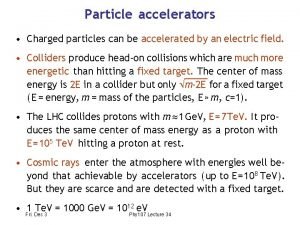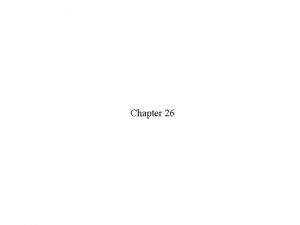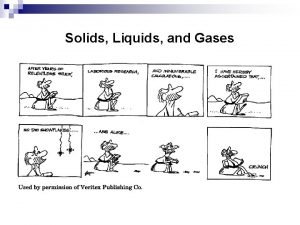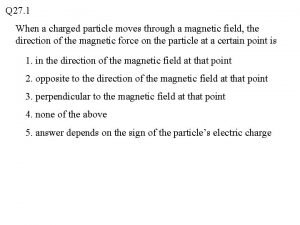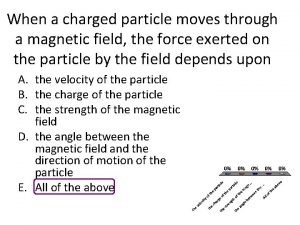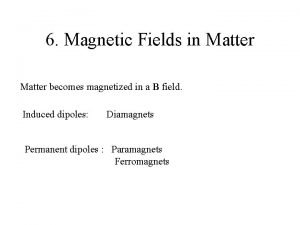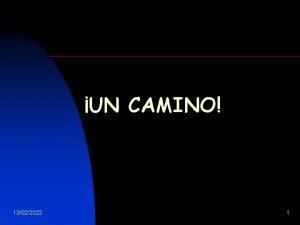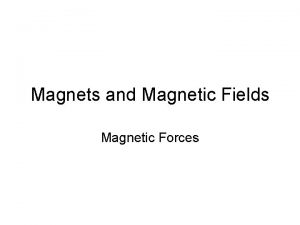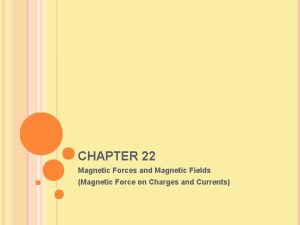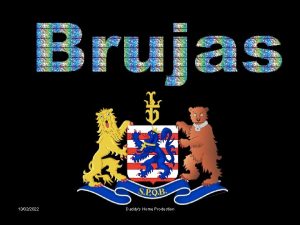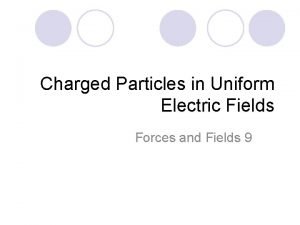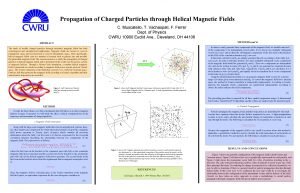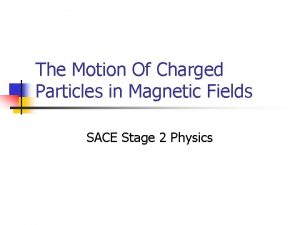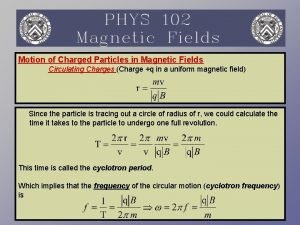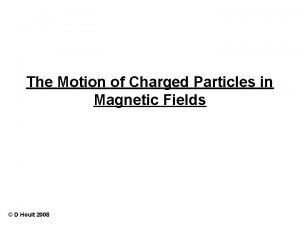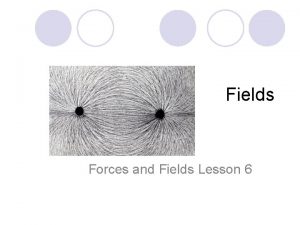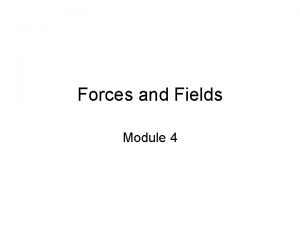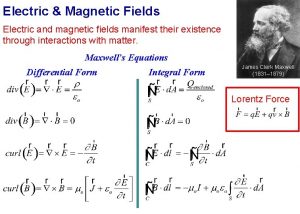13022022 Forces on Charged Particles and Magnetic Fields














- Slides: 14

13/02/2022 Forces on Charged Particles and Magnetic Fields (Summary Notes pages 14 and 15) Particles and Waves M Ashton 2013

What are we learning today? �What happens to charges in a magnetic field.

Magnetic Field Around a Current Carrying Wire �Activity: FCP L 3 – Moving Charged Particles Produce a Magnetic Field �The compasses move indicating that a magnetic field is present when the supply is switched on.


�The direction of the magnetic field depends on the direction of the electron current flow. �The direction can be determined using the left hand grip rule. Current going up Current going down

Demonstration �This will allow you to determine what happens to a current carrying wire in a magnetic field. • A wire carrying an electric current will experience a force when placed in a magnetic field. • Why?

�A moving electric charge creates its own magnetic field. �This means it will experience a force if it moves through a magnetic field. Click for Cloud Chamber Simulation

Electron Current Motor Rule �One common method is known as the right-hand motor rule. This is shown on the right. F �The thumb gives the motion (M), the first finger gives the field (F) and the second finger is the direction of electron current (I). M I

Conventional Current Motor Rule �For a conventional current, the direction of movement is opposite to the direction for a negative charge.

Example �In which direction will the force act? Movement (current) Left hand rule +

Example �In which direction is the force acting? Right hand rule Movement (current)

Example �In which direction is the force acting? Left hand rule +

Example �In which direction is the force acting? Right hand rule -

Now complete Qs 34 -39 on pages 12 & 13.
 Learning: module 26: magnetic forces and fields
Learning: module 26: magnetic forces and fields The search for fractionally charged particles has–
The search for fractionally charged particles has– Charged particles can be accelerated by
Charged particles can be accelerated by Chapter 6 ions charged particles in solution
Chapter 6 ions charged particles in solution For charged particles, what is the quantity q/m called?
For charged particles, what is the quantity q/m called? Gas like mixture of charged particles
Gas like mixture of charged particles Red fields to green fields
Red fields to green fields Magnets and magnetic fields lesson 1 answer key
Magnets and magnetic fields lesson 1 answer key Electric currents and magnetic fields
Electric currents and magnetic fields Visualizing magnetic field
Visualizing magnetic field When a charged particle moves in a region of magnetic field
When a charged particle moves in a region of magnetic field Magnetic
Magnetic Electric forces and fields concept review
Electric forces and fields concept review Chapter 16: electric forces and fields answers
Chapter 16: electric forces and fields answers Magnetic fields in matter
Magnetic fields in matter


